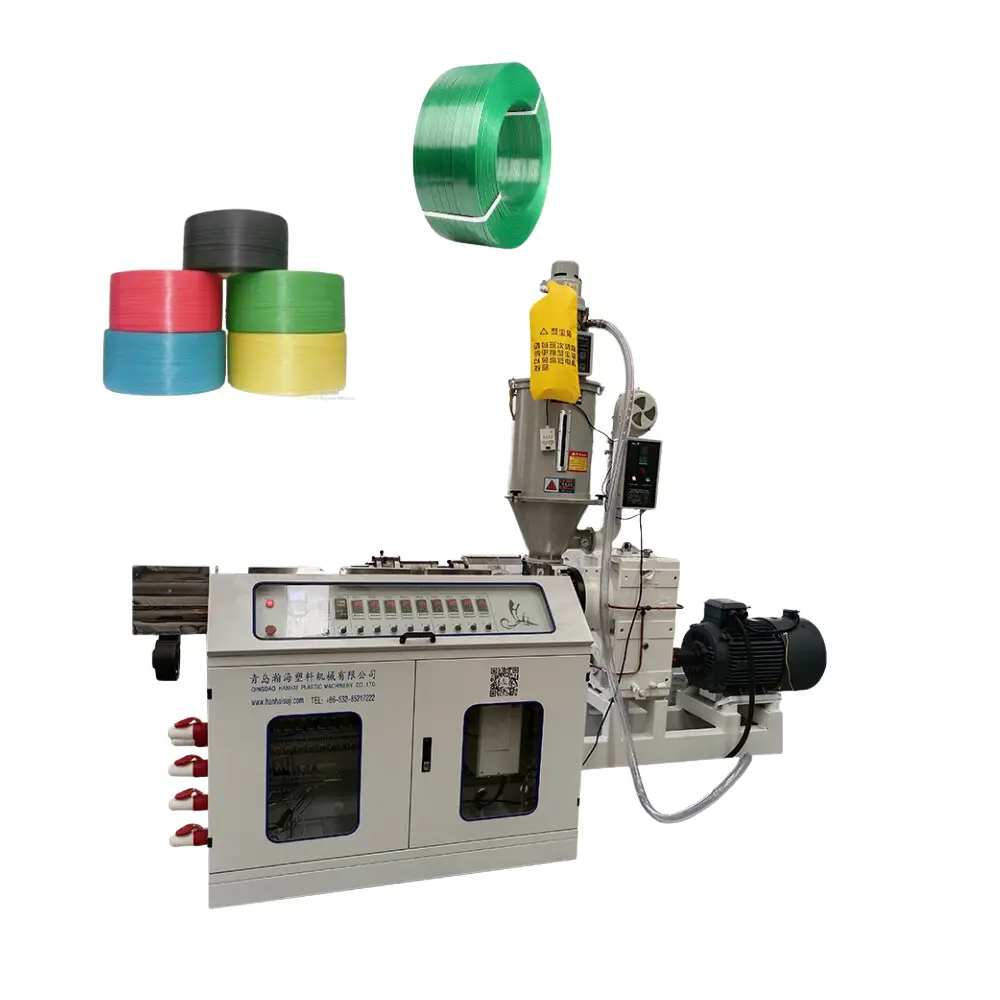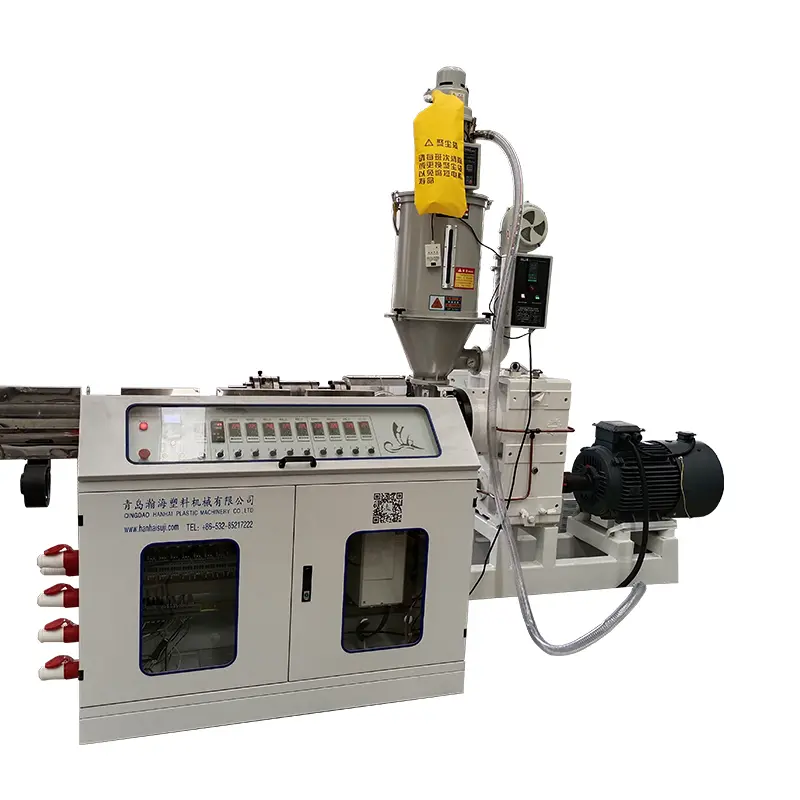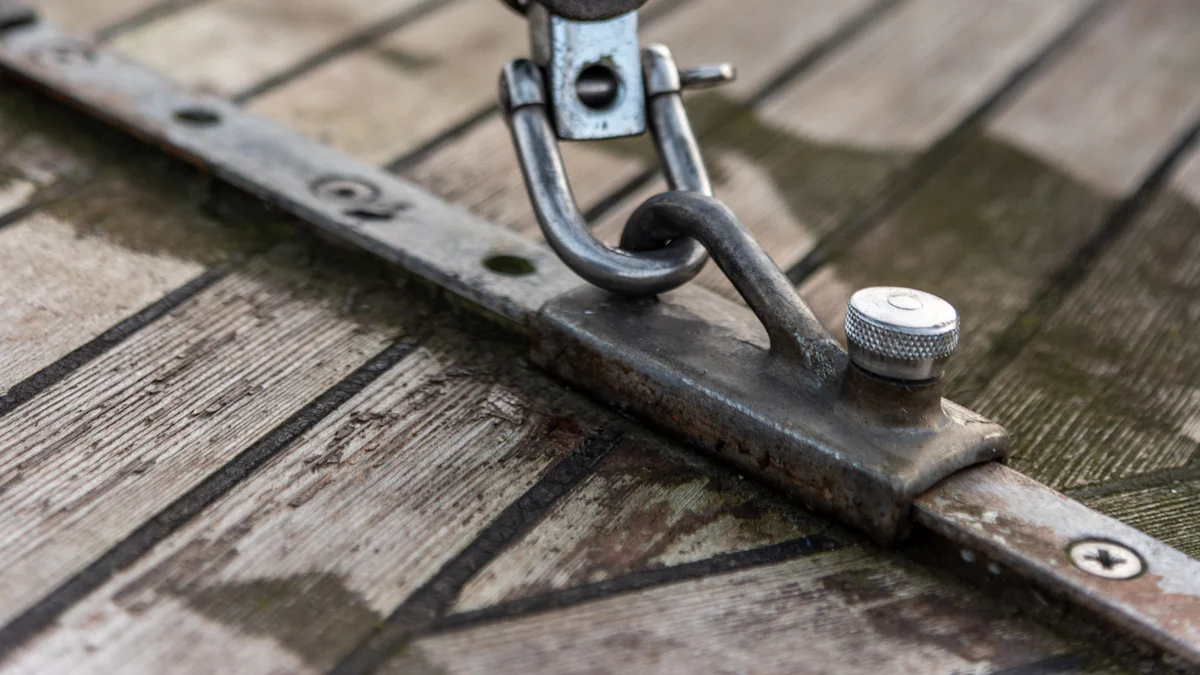
Choosing the right plastic strap machine can transform your packaging process. It ensures secure bundling, reduces waste, and saves costs. For businesses using a PET strap extruder machine or a PP strap extruder machine, the right equipment enhances efficiency. You’ll notice improved packaging quality and streamlined operations, which directly impact your bottom line.
Key Takeaways
- Picking the right plastic strap machine makes packaging faster and cheaper. Check how much you produce to pick the right machine.
- Think about your budget. Manual machines cost less but might not work later. Automatic machines cost more but save money on labor over time.
- Try the machine before buying it. Make sure it fits your packaging needs and works well with your current setup for best results.
Types of Plastic Strap Machines

Understanding the different types of plastic strap machines helps you make an informed decision for your business. Each type offers unique features and benefits tailored to specific packaging needs.
Manual Plastic Strap Machines
Manual plastic strap machines require human effort to operate. You use these machines to tension and seal straps manually. They are lightweight, portable, and cost-effective. These machines work well for small-scale operations or businesses with low packaging volumes. However, they demand more time and effort compared to automated options.
Semi-Automatic Plastic Strap Machines
Semi-automatic machines streamline the strapping process while still requiring some manual input. You feed the strap into the machine, which then tensions and seals it automatically. These machines are ideal for medium-sized businesses looking to improve efficiency without a significant investment. They are versatile and handle a variety of packaging sizes.
Automatic Plastic Strap Machines
Automatic machines take efficiency to the next level. They perform the entire strapping process, including feeding, tensioning, and sealing, without manual intervention. You can use these machines for high-volume operations where speed and consistency are critical. They reduce labor costs and improve productivity.
Fully Automatic Plastic Strap Machines
Fully automatic machines integrate seamlessly into production lines. They handle strapping tasks without any human involvement. These machines are perfect for large-scale industries with continuous packaging needs. They offer unmatched speed and precision, ensuring consistent results.
Best Use Cases for Each Type
- Manual Machines: Small businesses or occasional use.
- Semi-Automatic Machines: Medium-scale operations with moderate packaging needs.
- Automatic Machines: High-volume businesses requiring speed and efficiency.
- Fully Automatic Machines: Large-scale industries with automated production lines.
Strapping Materials and Their Applications

Polypropylene (PP) Strapping
Polypropylene (PP) strapping is a lightweight and cost-effective option. It works well for bundling lightweight packages or securing items that do not require high tension. You’ll find it commonly used in industries like food packaging, retail, and logistics. PP strapping offers flexibility and resists moisture, making it suitable for indoor and outdoor use. However, it may not perform well under heavy loads or extreme temperatures.
Polyester (PET) Strapping
Polyester (PET) strapping provides greater strength and durability compared to PP strapping. It handles heavy-duty applications and maintains tension over time. You can use PET strapping for securing large pallets, heavy boxes, or industrial equipment. It resists UV rays and extreme weather conditions, making it ideal for outdoor storage or shipping. PET strapping also absorbs shocks, which helps protect fragile goods during transit.
Key Differences Between PP and PET Strapping
PP and PET strapping differ in strength, flexibility, and application. PP strapping is more affordable and suitable for light-duty tasks. PET strapping, on the other hand, offers higher tensile strength and better resistance to environmental factors. While PP is softer and easier to handle, PET provides superior durability for demanding applications. Choosing between them depends on your packaging needs and the weight of the items you’re securing.
Choosing the Right Strapping Material for Your Needs
To select the right material, evaluate your packaging requirements. Consider the weight and size of your products, as well as the environmental conditions they will face. For lightweight or temporary bundling, PP strapping is a practical choice. For heavy loads or long-term storage, PET strapping delivers better performance. Pairing the right material with your plastic strap machine ensures efficient and reliable packaging.
Key Factors to Consider When Choosing a Plastic Strap MachineProduction Volume and Packaging Requirements
Your production volume plays a critical role in selecting the right plastic strap machine. For low-volume operations, manual or semi-automatic machines may suffice. High-volume businesses benefit from automatic or fully automatic machines, which handle large workloads efficiently. Assess your daily packaging needs and choose a machine that matches your output goals. Overestimating or underestimating your requirements can lead to inefficiencies or unnecessary costs.
Budget and Cost Considerations
Budget constraints often influence your decision. While manual machines are affordable, they may not meet the needs of growing businesses. Automatic and fully automatic machines require a higher upfront investment but save money in the long run by reducing labor costs. Evaluate the total cost of ownership, including maintenance and energy consumption, to ensure you make a cost-effective choice.
Ease of Use and Maintenance Needs
A user-friendly machine simplifies operations and reduces training time for your team. Look for machines with intuitive controls and clear instructions. Maintenance is another key factor. Machines with easily accessible components and minimal maintenance requirements save you time and effort. Regular upkeep ensures consistent performance and extends the machine’s lifespan.
Compatibility with Existing Equipment
Before purchasing, check if the machine integrates with your current setup. A plastic strap machine that works seamlessly with your existing conveyor belts or packaging lines prevents disruptions. Compatibility reduces the need for additional investments and ensures a smooth transition during installation.
Evaluating Durability and Longevity
Durability determines how well the machine withstands daily use. Machines made from high-quality materials last longer and perform reliably. Consider the working environment, such as exposure to dust or moisture, and choose a machine designed to handle those conditions. A durable machine minimizes downtime and maximizes your return on investment.
Plastic Strap Machines vs. AlternativesComparing Plastic Strapping to Steel Strapping
Plastic strapping and steel strapping serve different purposes. Plastic strapping is lightweight and flexible. It works well for securing lighter loads or items that require some elasticity during transport. Steel strapping, on the other hand, offers unmatched strength. It handles heavy-duty applications like securing industrial equipment or large construction materials.
Plastic strapping resists moisture and UV rays, making it suitable for outdoor use. Steel strapping, however, withstands extreme temperatures and sharp edges. It does not stretch, which ensures a firm hold for rigid loads. You should choose based on the weight and nature of your products.
Benefits of Using Plastic Strap Machines
Plastic strap machines simplify packaging. They reduce manual labor and improve efficiency. These machines handle tasks like tensioning and sealing with precision. You can achieve consistent results, which enhances the quality of your packaging.
Plastic strap machines also save time. They work faster than manual methods, allowing you to meet tight deadlines. Their versatility supports various strapping materials, including polypropylene and polyester. This flexibility ensures you can adapt to different packaging needs.
When Steel Strapping Machines Might Be a Better Option
Steel strapping machines excel in heavy-duty applications. If your business involves securing heavy loads or sharp-edged materials, steel strapping machines might be a better choice. They provide the strength and durability needed for industrial tasks.
However, steel strapping machines are less versatile. They are often more expensive and require careful handling to avoid injuries. Consider them only if your packaging demands exceed the capabilities of plastic strapping.
Steps to Select the Right Plastic Strap MachineAssess Your Business Needs and Packaging Goals
Start by evaluating your packaging requirements. Identify the types of products you need to strap and their weight. Consider the volume of packages you handle daily. If your business deals with lightweight items or occasional packaging, a manual or semi-automatic machine might work. For high-volume operations, automatic or fully automatic machines are better suited. Think about your long-term goals as well. A machine that aligns with your growth plans ensures you won’t outgrow it quickly.
Research and Compare Available Options
Explore the different models and features available in the market. Look for machines that match your specific needs. Compare their capabilities, such as speed, tensioning strength, and compatibility with various strapping materials. Read customer reviews and testimonials to understand how each machine performs in real-world scenarios. Create a list of potential options and weigh their pros and cons. This step helps you narrow down your choices effectively.
Consult with Industry Experts or Suppliers
Reach out to suppliers or industry professionals for advice. They can provide valuable insights into the latest technologies and trends. Share your packaging goals and challenges with them. Their expertise can help you identify the most suitable plastic strap machine for your business. Many suppliers also offer demonstrations or consultations, which give you a clearer understanding of how the machine operates.
Test the Machine Before Making a Purchase
Before finalizing your decision, test the machine in your packaging environment. Check its performance with your products and strapping materials. Pay attention to its ease of use, speed, and reliability. Testing ensures the machine meets your expectations and integrates well with your existing setup. It also helps you avoid costly mistakes by confirming the machine’s suitability for your needs.
Choosing the right plastic strap machine improves efficiency and reduces costs. You should evaluate factors like production needs, compatibility, and budget to make the best choice. Use this checklist to guide your decision:
- Identify your packaging goals.
- Compare machine types and features.
- Test the machine before purchasing.
This approach ensures you select a machine that meets your business needs.
FAQ
What is the lifespan of a plastic strap machine?
The lifespan depends on usage and maintenance. With proper care, most machines last 5–10 years. Regular servicing ensures consistent performance and extends durability.
Can one machine handle both PP and PET strapping?
Yes, many machines support both materials. Check the specifications to confirm compatibility. Using the correct settings ensures optimal performance and prevents damage.
How often should you maintain a plastic strap machine?
Perform maintenance every 3–6 months. Clean the machine, inspect moving parts, and replace worn components. Regular upkeep minimizes downtime and improves efficiency.
Media Contact
Company Name: Qingdao Tracy Future Tech Plastic Co., Ltd.
Email: Send Email
Country: China
Website: https://www.tgtextrusion.com/
